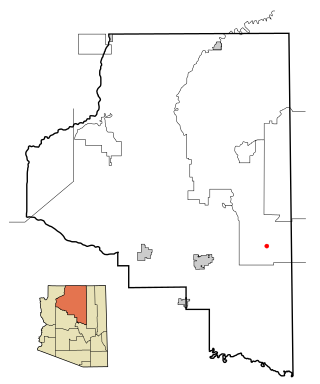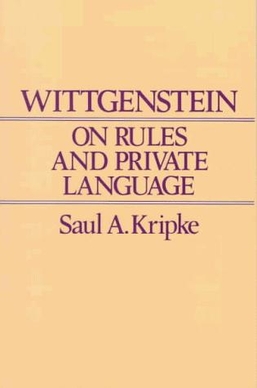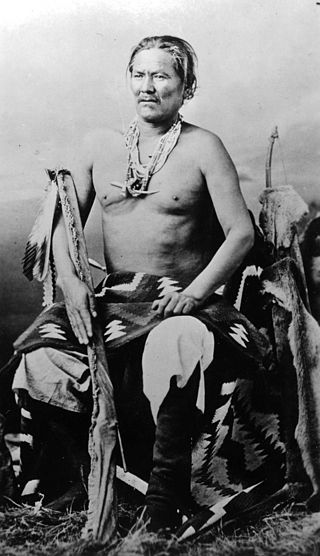
Language is a structured system of communication that consists of grammar and vocabulary. It is the primary means by which humans convey meaning, both in spoken and written forms, and may also be conveyed through sign languages. Human language is characterized by its cultural and historical diversity, with significant variations observed between cultures and across time. Human languages possess the properties of productivity and displacement, which enable the creation of an infinite number of sentences, and the ability to refer to objects, events, and ideas that are not immediately present in the discourse. The use of human language relies on social convention and is acquired through learning.

Philosophical Investigations is a work by the philosopher Ludwig Wittgenstein, published posthumously in 1953.
In linguistics and philosophy, a vague predicate is one which gives rise to borderline cases. For example, the English adjective "tall" is vague since it is not clearly true or false for someone of middling height. By contrast, the word "prime" is not vague since every number is definitively either prime or not. Vagueness is commonly diagnosed by a predicate's ability to give rise to the Sorites paradox. Vagueness is separate from ambiguity, in which an expression has multiple denotations. For instance the word "bank" is ambiguous since it can refer either to a river bank or to a financial institution, but there are no borderline cases between both interpretations.

A code talker was a person employed by the military during wartime to use a little-known language as a means of secret communication. The term is most often used for United States service members during the World Wars who used their knowledge of Native American languages as a basis to transmit coded messages. In particular, there were approximately 400 to 500 Native Americans in the United States Marine Corps whose primary job was to transmit secret tactical messages. Code talkers transmitted messages over military telephone or radio communications nets using formally or informally developed codes built upon their Indigenous languages. The code talkers improved the speed of encryption and decryption of communications in front line operations during World War II and are credited with a number of decisive victories. Their code was never broken.

The (International) Radiotelephony Spelling Alphabet, commonly known as the NATO phonetic alphabet, is the most widely used set of clear code words for communicating the letters of the Roman alphabet. Technically a radiotelephonic spelling alphabet, it goes by various names, including NATO spelling alphabet, ICAO phonetic alphabet and ICAO spelling alphabet. The ITU phonetic alphabet and figure code is a rarely used variant that differs in the code words for digits.
In philosophy and mathematics, Newcomb's paradox, also known as Newcomb's problem, is a thought experiment involving a game between two players, one of whom is able to predict the future.

LeuppLOOP is a census-designated place (CDP) in Coconino County, Arizona, on the Navajo Nation, United States. The population was 951 at the 2010 census.

Navajo or Navaho is a Southern Athabaskan language of the Na-Dené family, through which it is related to languages spoken across the western areas of North America. Navajo is spoken primarily in the Southwestern United States, especially in the Navajo Nation. It is one of the most widely spoken Native American languages and is the most widely spoken north of the Mexico–United States border, with almost 170,000 Americans speaking Navajo at home as of 2011.

In linguistics, code-switching or language alternation occurs when a speaker alternates between two or more languages, or language varieties, in the context of a single conversation or situation. Code-switching is different from plurilingualism in that plurilingualism refers to the ability of an individual to use multiple languages, while code-switching is the act of using multiple languages together. Multilinguals sometimes use elements of multiple languages when conversing with each other. Thus, code-switching is the use of more than one linguistic variety in a manner consistent with the syntax and phonology of each variety. Code-switching may happen between sentences, sentence fragments, words, or individual morphemes. However, some linguists consider the borrowing of words or morphemes from another language to be different from other types of code-switching. Likewise, code-switching can occur when there is a change in the environment in which one is speaking. Code-switching can happen in the context of speaking a different language or switching the verbiage to match that of the audience. There are many ways in which code-switching is employed, such as when speakers are unable to express themselves adequately in a single language or to signal an attitude towards something. Several theories have been developed to explain the reasoning behind code-switching from sociological and linguistic perspectives.

Forensic linguistics, legal linguistics, or language and the law, is the application of linguistic knowledge, methods, and insights to the forensic context of law, language, crime investigation, trial, and judicial procedure. It is a branch of applied linguistics.

Wittgenstein on Rules and Private Language is a 1982 book by philosopher of language Saul Kripke in which he contends that the central argument of Ludwig Wittgenstein's Philosophical Investigations centers on a skeptical rule-following paradox that undermines the possibility of our ever following rules in our use of language. Kripke writes that this paradox is "the most radical and original skeptical problem that philosophy has seen to date" (p. 60). He argues that Wittgenstein does not reject the argument that leads to the rule-following paradox, but accepts it and offers a "skeptical solution" to alleviate the paradox's destructive effects.
Joe Kieyoomia was a Navajo soldier in New Mexico's 200th Coast Artillery unit who was captured by the Imperial Japanese Army after the fall of the Philippines in 1942 during World War II. Kieyoomia was a POW in Nagasaki at the time of the atomic bombing but survived, reportedly having been shielded from the effects of the bomb by the concrete walls of his cell.

Windtalkers is a 2002 American war film directed and co-produced by John Woo, starring Nicolas Cage, Adam Beach, Peter Stormare, Noah Emmerich, Mark Ruffalo, and Christian Slater. It is based on the real story of code talkers from the Navajo nation during World War II. The film was theatrically released in the United States on June 14, 2002, receiving mixed reviews and grossing just $77.6 million worldwide against a production budget of $115 million.
Philip Johnston was an American civil engineer who is credited with proposing the idea of using the Navajo language as a Navajo code to be used in the Pacific Theater during World War II.

The private language argument argues that a language understandable by only a single individual is incoherent, and was introduced by Ludwig Wittgenstein in his later work, especially in the Philosophical Investigations. The argument was central to philosophical discussion in the second half of the 20th century.

The Navajo are a Native American people of the Southwestern United States.

As many as 25,000 Native Americans in World War II fought actively: 21,767 in the Army, 1,910 in the Navy, 874 in the Marines, 121 in the Coast Guard, and several hundred Native American women as nurses. These figures included over one-third of all able-bodied Native American men aged 18 to 50, and even included as high as seventy percent of the population of some tribes. The first Native American to be killed in WWII was Henry E. Nolatubby from Oklahoma. He was part of the Marine Detachment serving on the USS Arizona and went down with the ship on December 7, 1941. Unlike African Americans or Asian Americans, Native Americans did not serve in segregated units and served alongside white Americans.

Chester Nez was an American veteran of World War II. He was the last surviving original Navajo code talker who served in the United States Marine Corps during the war.
Native Americans in the United States have been a part of major military engagements throughout the history of the United States. There were many wars and battles fought between tribes before the birth of the United States, and later between European colonizers and Native Americans. Native Americans participated in many of the wars of the United States such as the French and Indian War, the Revolutionary War, the War of 1812, the Civil War, World War I, World War II, and the Vietnam War.













